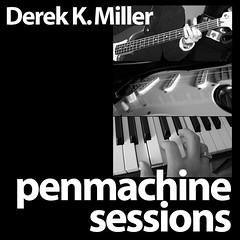?!
Permalinks to this entry: individual page or in monthly context. For more material from my journal, visit my home page or the archive.
Andy Lamey's recent column about the increased use of exclamation points in writing yielded (predictably) some discussion on the editors' list I belong to. Much was of the "Kids today, I tell ya!" variety (but without the exclamation points—most editors, you see, are not fond of them in formal or semi-formal writing).
One list member noted that Lamey quoted writer Paul Robinson, who wrote in 1980 that the exclamation point is "too childish." The editor concurred, saying that:
...modern North American society is fast becoming more childish—so in that respect, [the exclamation point] really is "the mark of our times"—the new juvenility.
I agree with her, but while I think she meant that as a bad thing, I don't. I'd suggest that we're not all becoming more juvenile, but that we're just seeing more writing from younger people. I haven't even noticed a particular increase in the use of exclamation marks (or, as many hard-core techie people so juvenilely call them, bangs) in places where they previously would not have appeared, i.e. in edited print.
Where I have noticed more exclamation points is in the informal correspondence (much of it from younger people) that, for much of the last century, has been relegated to the telephone. We're now turning again to the written word, not in handwritten letters as in decades and centuries long past, but in electronic form:
- mobile phone SMS "texting"
- instant messages
- Web sites
...and so on. The article mentions only three media as examples of bang-happiness: Web sites, e-mail, and movie ads. New, informal media forms written by people who might never have seen publication before, and whose work is generally unedited, and then some advertising. Extraneous exclamation marks in film advertising are as old as films, and have long been common in advertising generally. The author also specifically mentions that the New York Times would look silly to use them in headlines.
Many teenagers who would have been lying on their bedroom floors with their legs propped against the wall yakking on the phone are now carrying on multiple instant-messaging conversations or pounding out SMS phone messages with their thumbs. With bangs, of course.
Nothing really new here on the exclamation front, in other words. We're just seeing more of what used to be spoken on the phone ("Get out! Did she really dump him?!") and written in private letters. With weblogs and other easily-reproduced electronic text, people who have any publicity-hound hammy tendencies (like me) suddenly have an easy venue for their exclamation-laden prose to get to the world.
Unlike many doomsaying pundits, I don't believe writing standards to be in decline generally. I think more people are writing, and we're reading more of their words. The proportion of crappy writing is probably the same as it has always been—maybe lower—but we see lots more stuff that hasn't been passed through any editorial filters than we used to, so it seems worse to our critical editors' eyes on average.
Personally, I prefer the trend to a few more (single) exclamation marks and a few fewer (ugh) semicolons. So few people understand how a semicolon is supposed to work, and even those who do routinely appear stuffy, because most of the time they could use separate sentences or an em-dash instead. At least everyone is clear on what an exclamation mark is for, even if they overuse it.
But do I draw the line at more than a single exclamation or question mark in a row? You bet I do!







